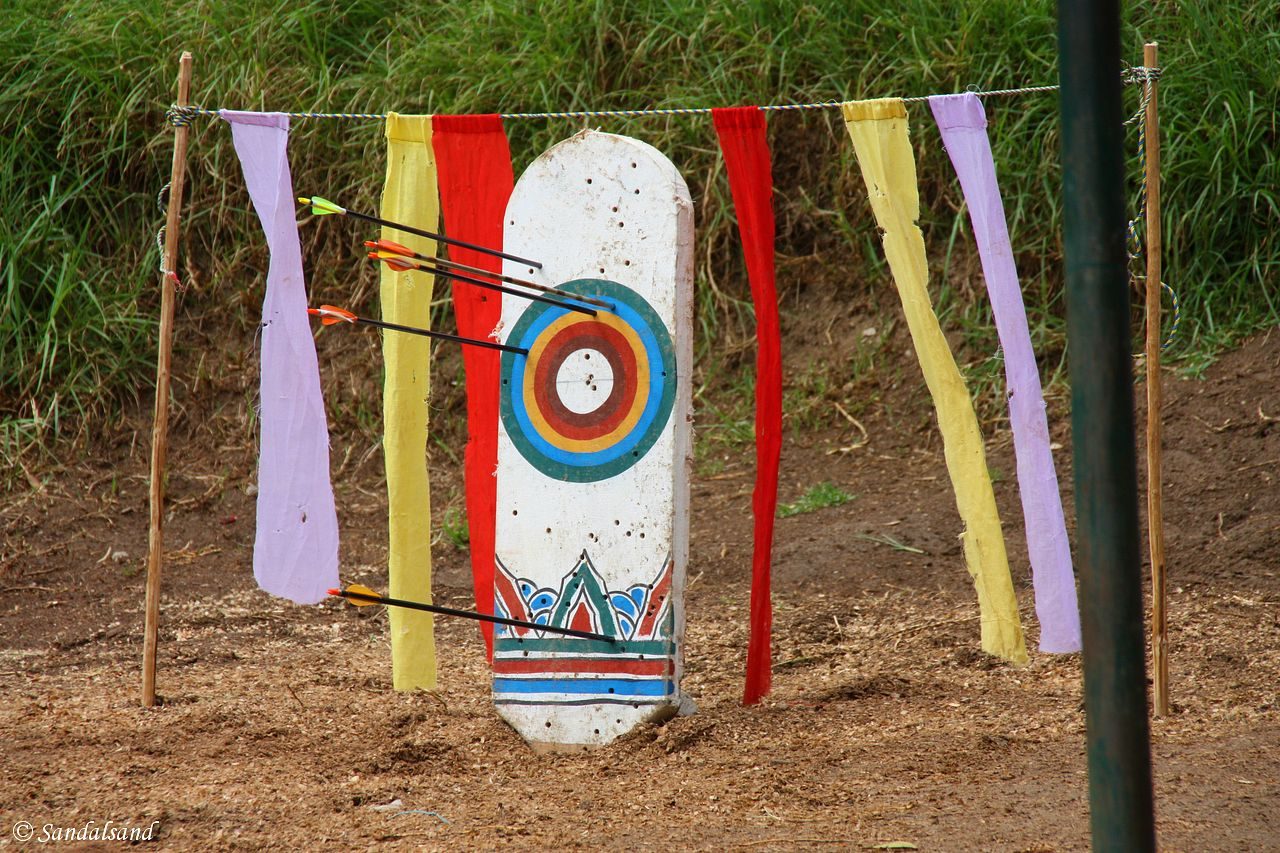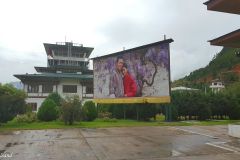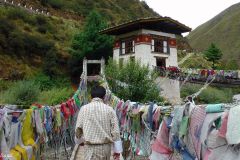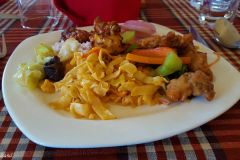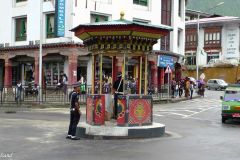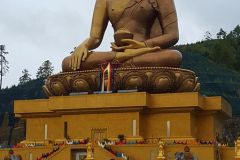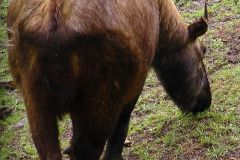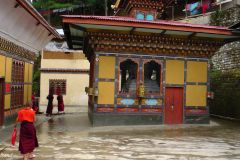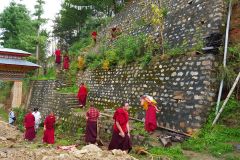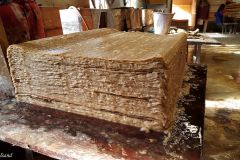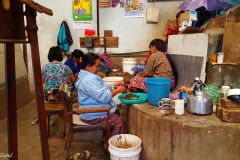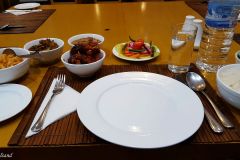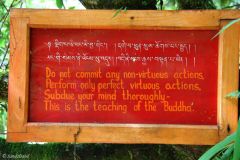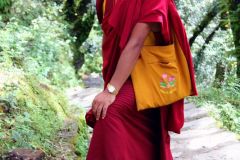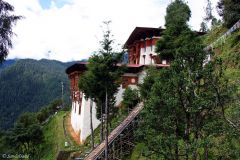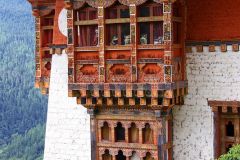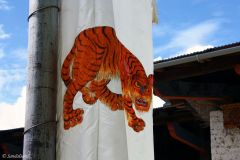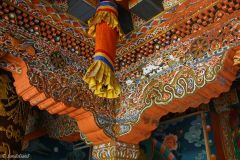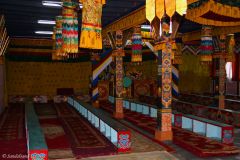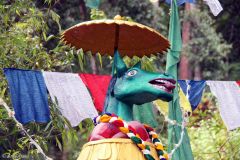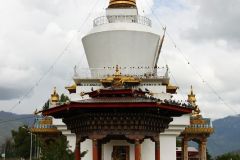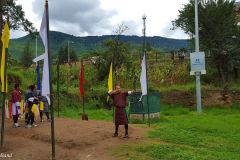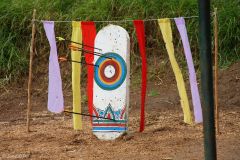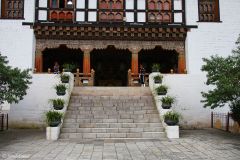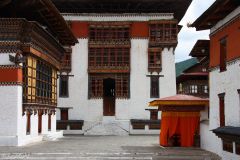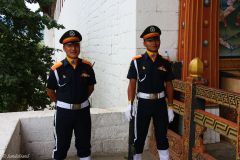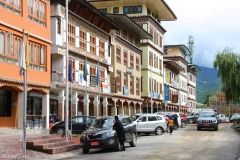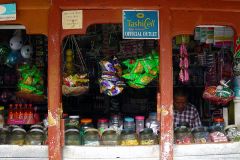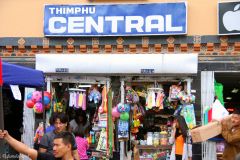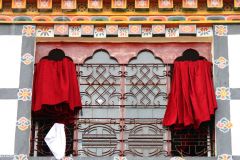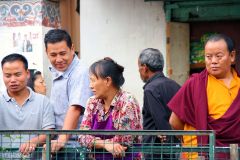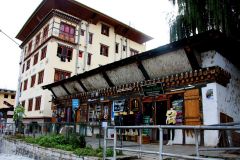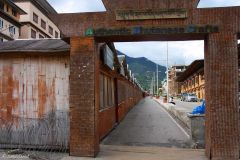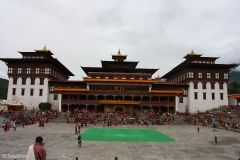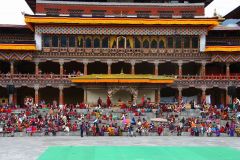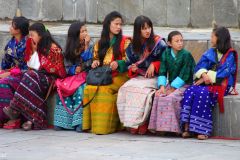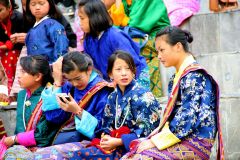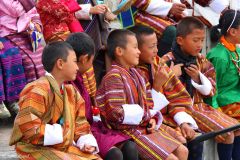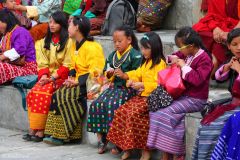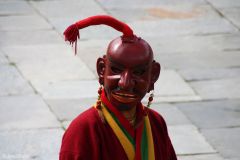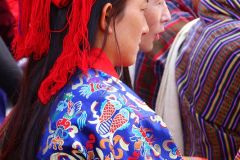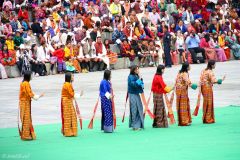I was going to Thimphu, the capital of Bhutan. The roar from the aircraft engines came to a stop and I realised I had landed in the Land of the Thunder Dragon. Stepping out onto the tarmac with the eyes of a smiling king and queen upon me I walked straight into the dream I have had since my early teens.
Introducing the Kingdom
Bhutan is an isolated kingdom high in the Himalayas, surrounded by huge and mighty neighbours – China to the north and west and India to the east and south. Its population of less than a million has never posed any threat to other countries, and it has always been a poor country with few natural resources to exploit. Hence, there has not been much sense in invading or occupying the territory. The people are traditionally very religious, belonging for the most part to the Tibetan Buddhist tradition.
The father of the present king coined Bhutan the Land of Gross National Happiness, meaning that the country would in its future development process stick to its roots and not measure its success in financial terms. Tradition is everything in Bhutan. You will come to see it in the way people are dressed. You will notice that virtually every building is constructed exactly in the same tradition as the ancient monasteries. Residential houses, hotels, government buildings and even the control tower at the airport are using the same architecture.
Connections
Bhutan has few international connections. On road only with India, by air with India and Nepal. My plane from Bangkok had made a transit stop in the Indian town of Guwahati before landing in Paro, Bhutan’s only international airport. The reason is partly due to the fact that weather conditions are unstable and a stop in the lowlands is convenient before making the jump into the mist.
I was never much of a philatelist, but in my early years teens I had a kick and even got hold of a stamp from Bhutan. 40 years on I have a slight recollection that it might have been a fake, but the fascination for this remote country was set. The Shangri-La of the non-fictional world became from that point on an important beacon in my search for ever more places to visit. Finally, the day had arrived and I had a week to get acquainted to the country.
A quick orientation
The map below is dynamic in the sense that you may expand it into a new tab or your Google Maps app. You may zoom in and out and click on the markers. In short, it includes the places I went and the roads I travelled while in Bhutan. As I will return to at the end of this first article, this is basically what most foreigners coming to Bhutan get to see. More or less of course, depending on how much time you have allowed yourself.
I will be presenting the story of my visit in several articles. This is the first. Moreover I will do it in a chronological way as I found no reason to do it otherwise. Impressions and general pieces of advice for others will be incorporated into the articles as I see fit.
Day 1 in Thimphu and its surroundings
Airport arrival
The Paro airport terminal has within its walls the features we meet throughout the world on small og middle-sized airport terminals. What differs is the exterior. It is built according to the tradition of the dzongs, the fortresses that dot the country at every major, strategic point. This very architecture is found in almost every building across the land, and indeed a royal decree in 1998 stated that all buildings must be constructed with multi-coloured wood frontages, small arched windows and a sloping roof.
The formal procedures went smoothly but I was not mentally prepared for what happened outside the terminal. In Bhutan all foreigners must have an all-inclusive ticket, with a guide. There were lots of them waiting outside, all male, all dressed in traditional Bhutanese attire. I found my man and we went over to his car and the waiting driver.
The first dzong
On our way down the valley to Thimphu we made one stop, and so did seemingly everyone else. Here I got a good view of my first of several ancient dzongs, the fortresses built some hundred years ago when Bhutan consolidated its territory into one realm. A dzong is a walled compound housing temples, monasteries and administrative buildings and several courtyards. This particular dzong is called Tachog Lhakhang Dzong and was not open to visitors. The reason we stopped here is that below the building there is an old bridge spanning the river.
It was originally constructed by one of Bhutan’s national heroes, called Drupthob Thangtong Gyalpo, in the late 14th century. It is an iron chain bridge, flexible and durable, and you will have great fun walking across looking down through the iron net making up the floor. There is a wooden bridge right next to it for your return.
Into Thimphu and on to a Buddha statue and the national animal
Thimphu is the nation’s capital and largest city – and rapidly becoming congested as ever more cars are imported. The network of streets in the city, and indeed roads around the country is not made for traffic on four wheels, neither in standard nor capacity. We had buffet lunch, the first of many during my week-long. The choice of food, veggies and some meat, was varied and quite tasty – and so was the local beer.
Our next stop involved driving high up on the hillside overlooking Thimphu to a place called Kuensel Phodrang (Buddha Point). A huge sitting Buddha, 51 metres tall, had been erected and a park was being constructed around it.
Coming up next was the Motithang Takin Preserve, a kind of zoo with takins walking freely around in a generously sized, fenced area. Takins are native to the Eastern Himalayas, an endangered species and the national animal of Bhutan. They have a strange appearance, a kind of mix between a goat and an antilope.
A nunnery, a paper factory and worrying about stray dogs
Our third stop this afternoon was the Thangthong Dewachen Nunnery. Bhutan is a Buddhist country and the monasteries, and in this case nunneries, are plentiful around the country – around 2,000. In this nunnery there were a number of very young girls.
Our last stop before checking into the hotel was at a small paper factory producing hand made paper. It was fascinating to watch the process.
Back in the centre of Thimphu I was finally left off at my hotel and told by my guide to avoid the streets outside after sunset. There is no crime to speak of in Bhutan but they have large packs of stray dogs roaming the streets. They may get quite threatening unless you know how to behave. I went for a walk around town and made sure I returned to my hotel before it got too dark. All through the night I could here the dogs barking from the parking lot across the street, and I could watch them following single persons walking by.
One may ask why the authorities do not impose measures to stop this problem. The reason is this: Buddhists do not kill. In Bhutan they import meat from India. They keep their dogs alive because it is religiously and politically impossible to do anything about it. A sterilisation program cannot cope with the large number of dogs.
Day 2
The next morning we went to a monastery. The Tango Gompa Monastery was a half-hour drive outside of Thimphu, and an hour hike up a steep hillside. It was such a great hike up and the monastery was wonderful. The altitude is at almost 3,000m and you will notice it as you follow the trail.
Back in town we went to a place called the National Memorial Chorten, a large stupa. Next was the Archery Ground where we witnessed training in the national sport of Bhutan. There is a football stadium next to it, the Changlimithang National Stadium, but Bhutan’s national team is not much of threat to any nation.
Day 3
Tashichho Dzong has been built and destroyed several times. The present dzong only dates back to the 1960s but noone could tell because it looks like it has been like that forever. Right outside the dzong there is a series of modest barrack-style buildings which houses the ministries. Across the river we spot the national assembly, while the modest royal residence is hidden among the trees near the river. We actually had a look inside the dzong’s courtyards yesterday, but today was a very special day.
The people of Bhutan love festivals and they are most often staged in or near the dzongs. Right behind this dzong there is a large open square lined by seats for spectators, forming a kind of stadium. The tourists being in town at this very day were totally outnumbered by locals, in colourful dresses, young and old, coming here for a day out. They would be witnessing dances, jokers, and musicians performing acts with symbolism beyond my knowledge and imagination. I confess to being more interesting in exploring the folklore off stage, than what was going on inside. This was spectacular: Thousands of people, extremely colourful and ethnic, and very proud of themselves and their history.
We stayed for several hours and then we left Thimphu for a long drive across the mountains. That story will be told in the next chapter.
What more?
This article is the first from my visit to Bhutan. I flew in from Bangkok, spent seven days in Bhutan and then took a flight to Nepal for another week. Read about the overall schedule in this article: The outline of a visit to the Himalayas.
This series from Bhutan consists of the following chapters:
(1) Thimphu and surroundings (days 1-3)
(2) The Dochula Pass and Punakha Valley (days 3-4)
(3) The Phobjikha Valley (days 4-5)
(4) The holy Taktsang Lhakhang (Tiger’s Nest) (day 6)
(5) The city of Paro (days 5-7)
PICS – Bhutan (all images from the country in one place)

